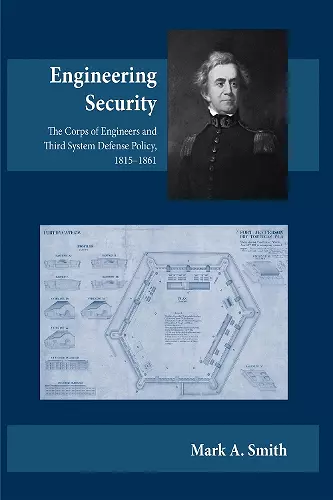Engineering Security
The Corps of Engineers and Third System Defense Policy, 1815–1861
Format:Paperback
Publisher:The University of Alabama Press
Published:30th May '20
Currently unavailable, and unfortunately no date known when it will be back

Thorough examination of the antebellum fortifications that formed the backbone of U.S. military defense during the National Period
The system of coastal defenses built by the federal government after the War of 1812 was more than a series of forts standing guard over a watery frontier. It was an integrated and comprehensive plan of national defense developed by the US Army Corps of Engineers, and it represented the nation’s first peacetime defense policy.
Known as the Third System since it replaced two earlier attempts, it included coastal fortifications but also denoted the values of the society that created it. The governing defense policy was one that combined permanent fortifications to defend seaports, a national militia system, and a small regular army.
The Third System remained the defense paradigm in the United States from 1816 to 1861, when the onset of the Civil War changed the standard. In addition to providing the country with military security, the system also provided the context for the ongoing discussion in Congress over national defense through annual congressional debates on military funding.
- List of Illustrations
- Acknowledgments
- Introduction
- 1. The Early National Context: American Coastal Defense to 1815
- 2. Engineering Policy, 1816–1821
- 3. The Politics of Engineering, 1820–1828
- 4. National Defense in the Jacksonian Era, 1828–1849
- 5. Expertise and the Rise of Responsibility, 1826–1860
- 6. Challenge and Crisis, 1850–1861
- 7. Constructing Security, 1845–1860
- 8. Engineering Gulf Coast Society, 1845–1860
- 9. Evaluation: Third System Policy in the American Civil War
- 10. Conclusions
- Frequently Used Abbreviations
- Notes
- Bibliographic Essay
- Index
“Solid and single-minded, this study argues that historians have been unfair to the builders of these fortifications. It maintains that Congress, and the engineers it hired, knew exactly what they were doing, . . . that despite the fact that Civil War historians have damned the forts for their obsolescence, Smith still drives home his point: America’s giant seaboard forts achieved their limited strategic goals.”- Todd Shallat, author of Structures in the Stream: Water, Science and the U.S. Corps of Engineers;
“Engineering Security stands as an important addition to literature on the American defense policy, coastal fortifications, and the Corps of Engineers in the antebellum period.”- Army History;
“Smith has produced a thoroughly researched, carefully reasoned, and clearly written analysis of a key element of nineteenth-century US defense policy, and he makes a solid contribution to the field.”- Journal of Military History
ISBN: 9780817359904
Dimensions: unknown
Weight: 450g
278 pages